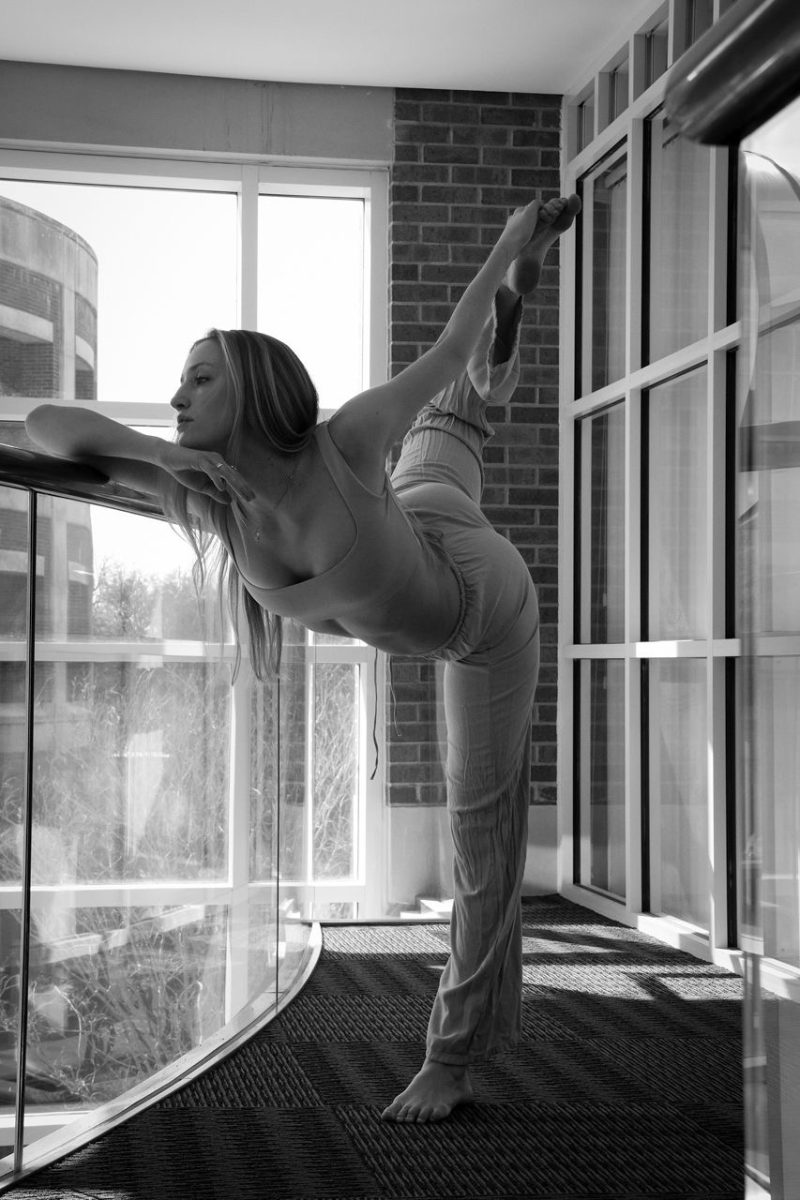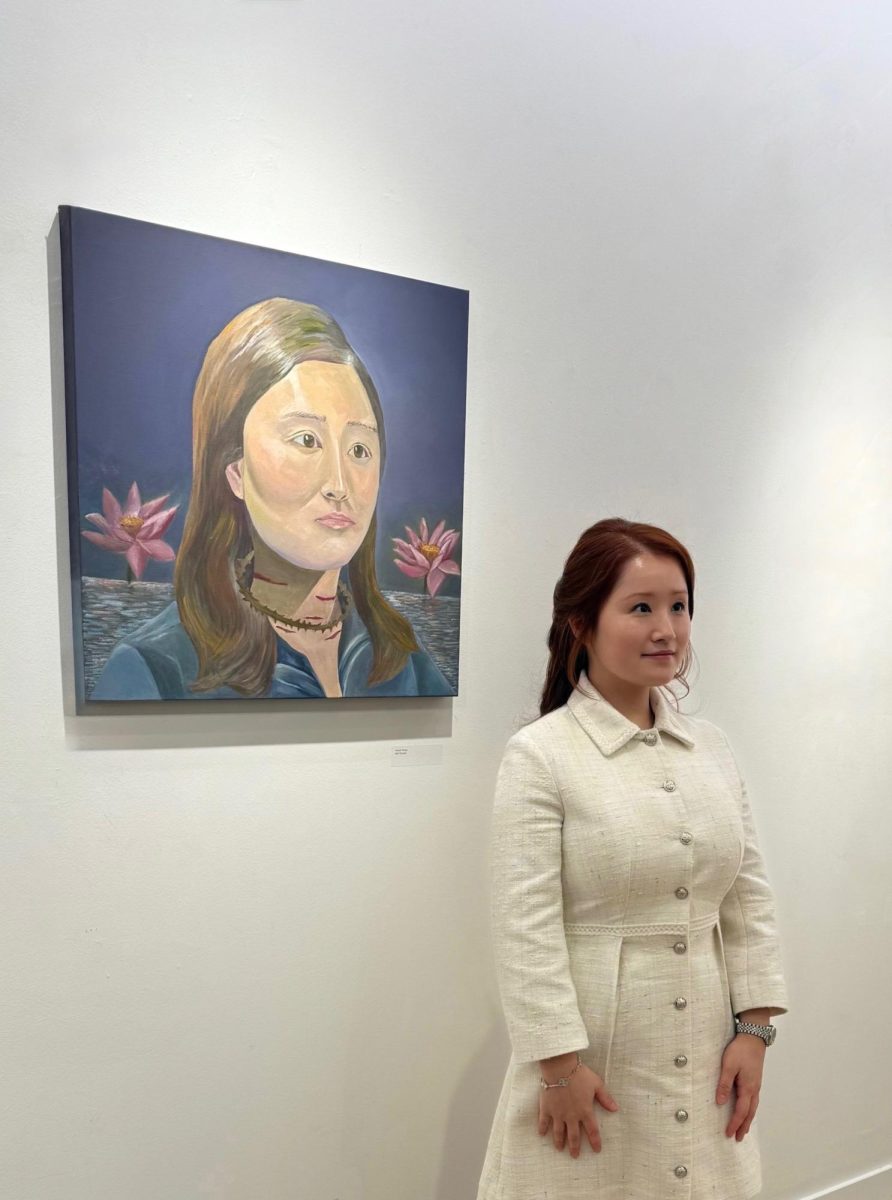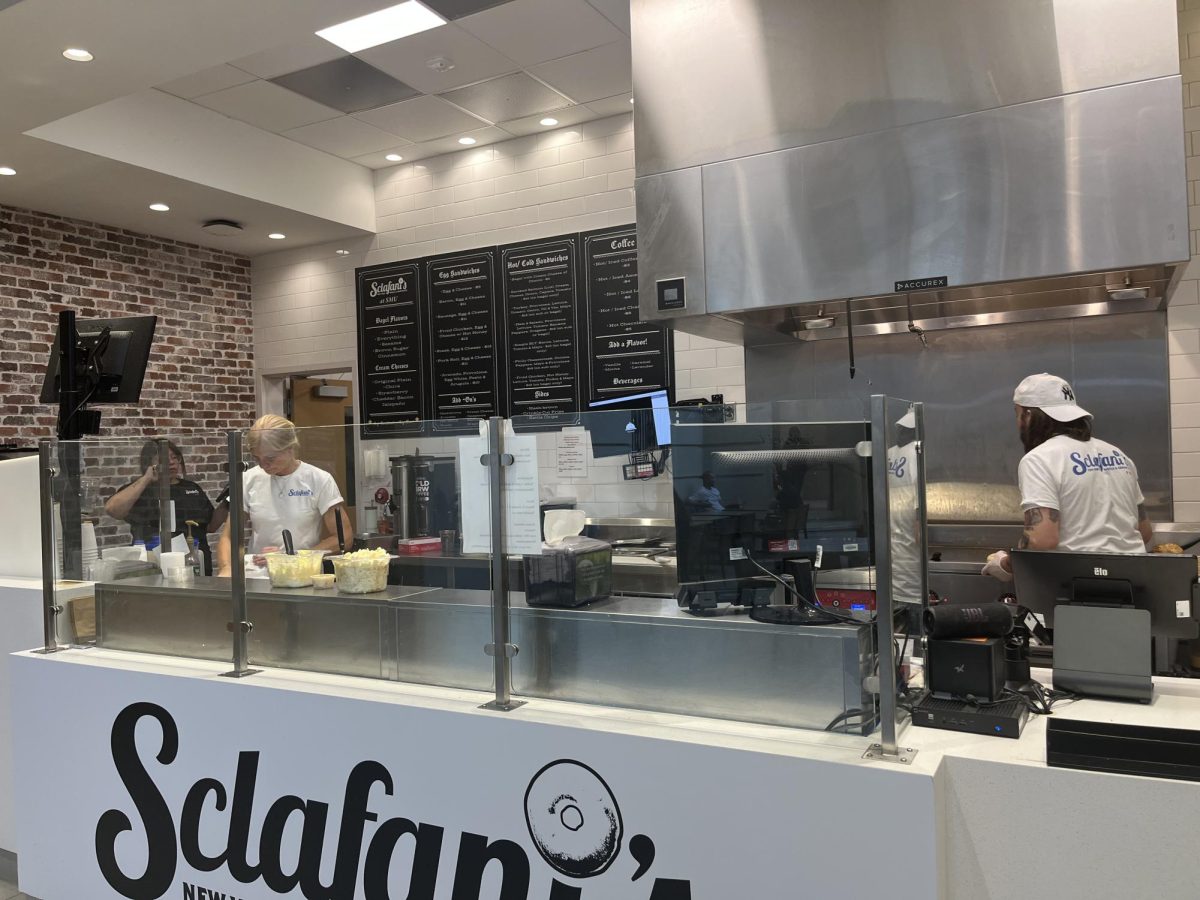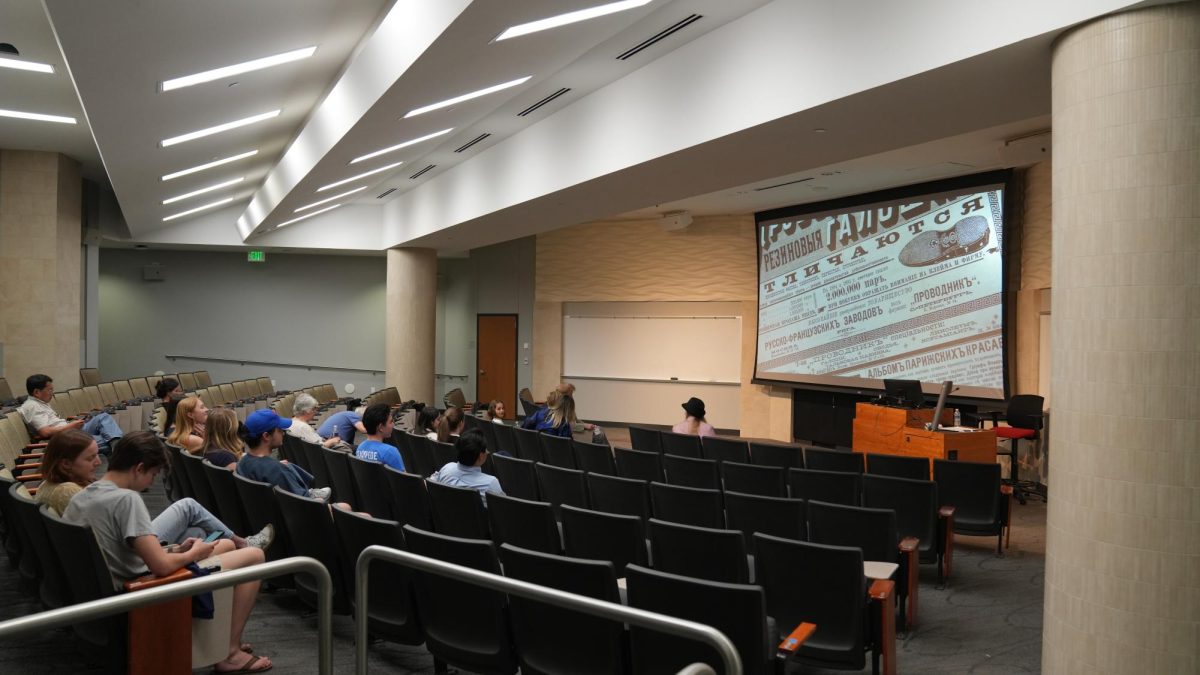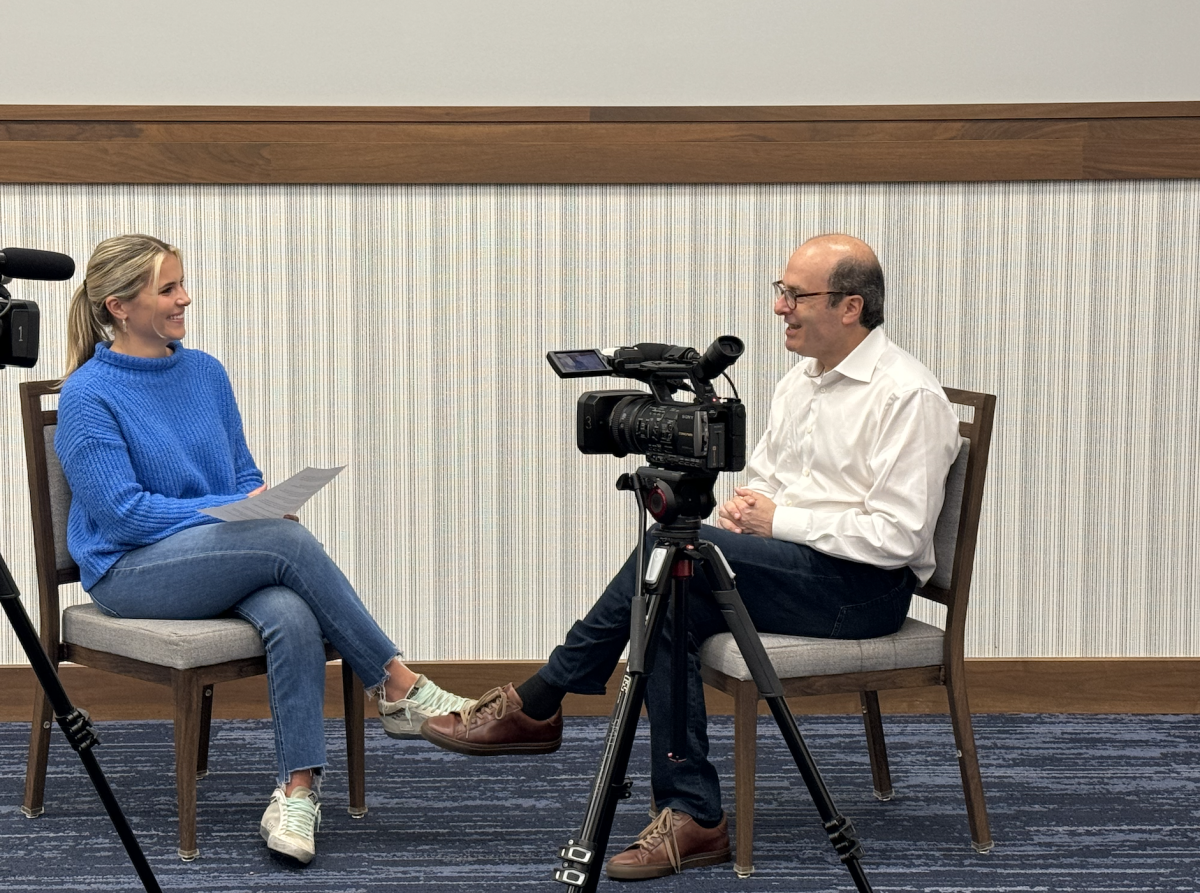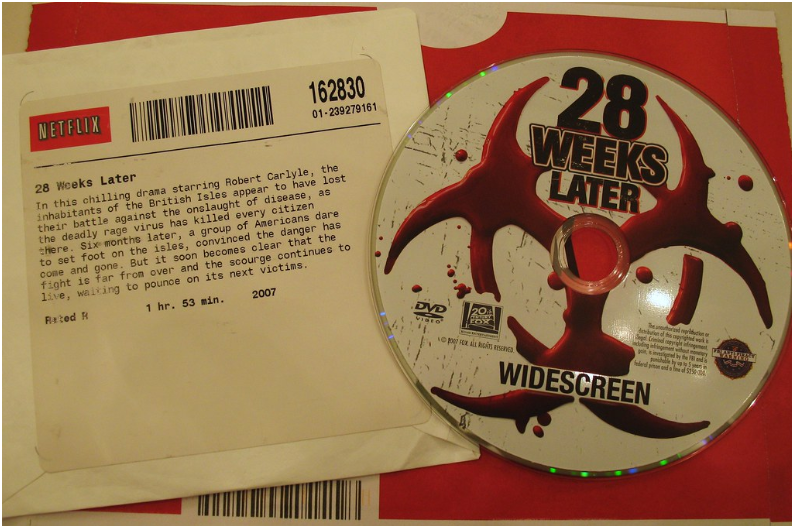Mid-century modern red doors swing open to a low murmur of hushed conversation that builds and mingles with the smell of fresh popcorn. A crowd gathers around the bar and under vintage posters of this week’s movie showings.
The lights of a main 670-seat room dim and the bright white screen in the historic Texas Theater in Oak Cliff casts shadows on silhouettes of heads lined up in rows of metal stadium seats. A pre-pre-showing, consisting of a Letterbox ad, a history of Popcorn, and a Muppet’s retelling of cinema history starts to play.
“[Others] can build a great theater,” said Jason Reimer, the creative director and co-owner of the Texas Theater. “But you can’t build 100 years of history.”
The filled seats, an increasingly less common sight for modern theaters as they struggle to compete with Netflix and other at-home streaming services, serve as a testament to the resilience of the historic and cultural landmark theater on Jefferson Boulevard.
“Today is the 150th battle of Rockridge,” Boston-based film critic Odie Henderson says as he introduces the night’s showing, “Blazing Saddles,” to the laughter of the audience.
Last-minute arrivals scatter to the back and the sides of the theater with their popcorn as the ratio of the screen adjusts itself to the proper screen size, and the movie starts.
The Texas Theater stands as a monument to nearly 100 years of both Dallas and cinematographic history. The building’s storied evolution can be traced in historical markers, memories of a spectacle, a bygone era of movie theaters left decaying, and a triumphal re-opening. In spite of decades under the formidable reign of multiplex theaters and now, streaming services, the future of the cultural landmark burns brighter than the fire and wrecking balls that once threatened to destroy it as it expands beyond the classic definition of a movie theater.
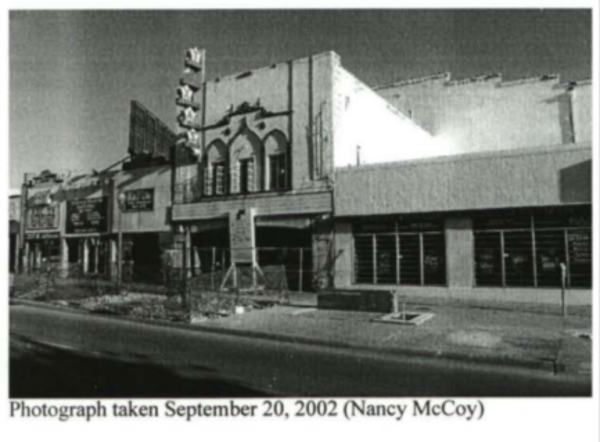
Movie theaters have seen a seismic shift in attendance in recent years, one that has been exacerbated since the start of the Pandemic era. CNBC reports that last year, only 95 movies had theatrical releases, an incredible decline from the 112 theatrical releases in 2018, which “barely surpassed $9 billion at the box office.” Furthermore, the Washington Post reported a 16% decline in moviegoer attendance since 2017, with only 43% of adults saying they went to see movies. The Texas Theater is challenging these stats in its Oak Cliff community.
The Texas Theater, established in 1931, was financed and built under the supervision of famous film producer Howard Hughes. The theater had been designed to be a spectacle. The nomination letter for the theater’s spot on the National Registry of Historic Places stated that the architectural design of the theater created a “fantasy land within four walls,” which “enhance the fantasy and exoticism of the movies.”
The theater’s interior has kept the original spirit of its design at heart. Vintage video game machines upstairs, a poster for a record store, and a bulky box TV that silently plays movies, capture the intrigue and conversation of patrons at the bar.
“What we’re trying to keep going is not only cinema culture, but culture culture,” Reimer said.
The crowded audience sits in silence as the last notes of the movie’s theme song ring out in triumph. Afterwards, guests slowly flicker out into the hallway.
“For those who are here to see the next movie, the theater upstairs will be seated in five minutes,” a red-shirted employee announces as he descends the front stairs
A crowd starts to thin out from the booths and bar as moviegoers start heading upstairs to the newly renovated auditorium. The front door opens.
“Welcome in y’all,” a younger employee greets the newest batch of moviegoers as she tends to the popcorn.
In his youth, celebrated radio host and Oak Cliff native, Mike Rhyner, said that the theater used to be one of the highlights of his day in his childhood.
“Our parents [would] take us to Jefferson [Boulevard], and we would go into some of the stores, we’d get something to eat, and then we’d go to a movie at the Texas theater,” Rhyner said. “I loved that place – but then, I still love it.”
While the cinema had already started to face competition for a limited number of film reels from the burgeoning popular multiplex cinemas in Dallas, a harbinger for the theater’s future financial crisis, the theater still played big enough hits to draw in crowds.
“If Doris Day had a new film, then there’s a pretty good chance that it would wind up at the Texas Theater,” Rhyner said. “They had a lot of stuff that was worth seeing.”
In the mid-1970s, the theater, like many local neighborhood theaters that would soon follow, finally shut down. From then on, multiplex theaters were king. These new theaters offered screenings of multiple movies at once, larger screens, and surround sound. Even from the start of the Texas Theater’s doors closing shut, there had been many attempts to resurrect the building. However, these attempts faced numerous disasters resulting in financial loss, a destructive fire and a desperate last second save from a wrecking ball. Eventually, the building would simply sit abandoned, graffitied, and decaying on Jefferson Boulevard for many years as the building was passed from unsuccessful owner to unsuccessful owner.
“We gave up a lot when we let our neighborhood movie theaters die,” said Robert Wilonsky, former film critic for The Dallas Morning News and self-proclaimed Dallas historian. “You had to trade in the intimacy of the neighborhood theater for the spectacle of the multiplex.”
Luckily, in 2009, after having been painstakingly remodeled on the inside by the Oak Cliff Foundation, the building was given stewardship to several filmmakers who saw its potential. With a vision only a cinephile could conjure, the theater reopened in 2010.
Today, while standard movie theaters across the country struggle to attract audiences because of the rise in streaming’s popularity, the Texas Theater has found the secret to success, community cultivation. Now, it’s thriving. While most other theaters play the standard blockbusters, the theater’s weekly schedule is packed with specific programming around vintage, foreign-made, and blockbuster movies, as well as comedians, live music, and dance recitals.
“We can see a lot of times where they come from, places like Denton, Fort Worth, Plano, sometimes like Garland; Mesquite even,” he said. “I can show you the same movies, but that’s not gonna really get you to drive from Plano. What’s gonna get you to drive from Plano is everything that makes it special.”
Out in the lobby, as guests mingle about before and after their movies, Henderson sets up a booth for his new book on the Blackspotation film genre.
“Thanks for buying my book,” he says to the moviegoers who stop at his booth.
A sizable line of post-“Blazing Saddles” moviegoers has formed around his booth. The theater’s patrons will also pass booths advocating for LGBTQ rights and voter registration on their way to the door. For many people, like Wilonksy, the pilgrimage to the theater is about connection and appreciation to the art form.
“Having a theater that showed older films, having a repertory theater, helps remind audiences that these were not things made for small television screens, but they were meant to be seen in a communal environment with a big screen that engulfs you,” Wilonsky said. “So to see old films, to see independent films has been nothing short of incredible and significant.”
Through its efforts, and the community’s support, the theater has since renovated and added a new upstairs bar, new balcony seating, and a second screen upstairs equipped with a 35 millimeter film projector, making it one of the few places that can show one of the Academy’s (yes, the one celebrities thank when they win an Oscar) archival print. With no plans to stop or slow down, the future of the theater looks stronger than ever.
“We do so many things, that are to us, the real heart of what we do,” Reimer said. “It harkens back to the 1931 purpose of the building.”





